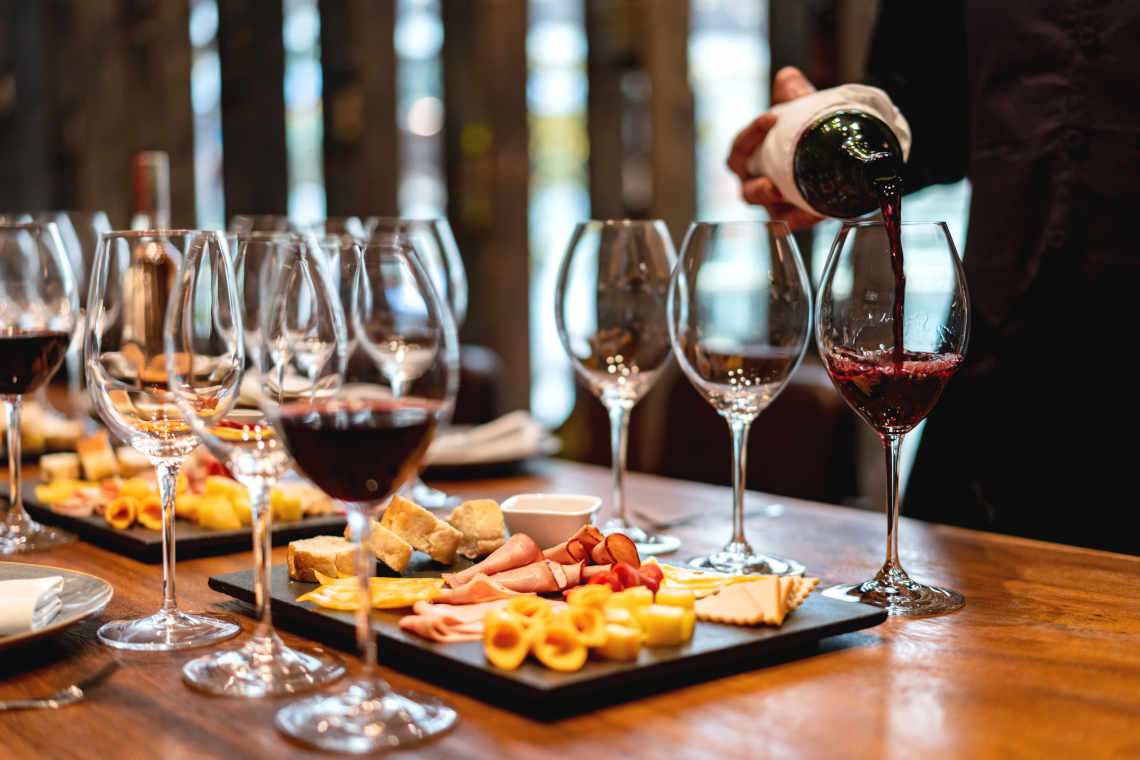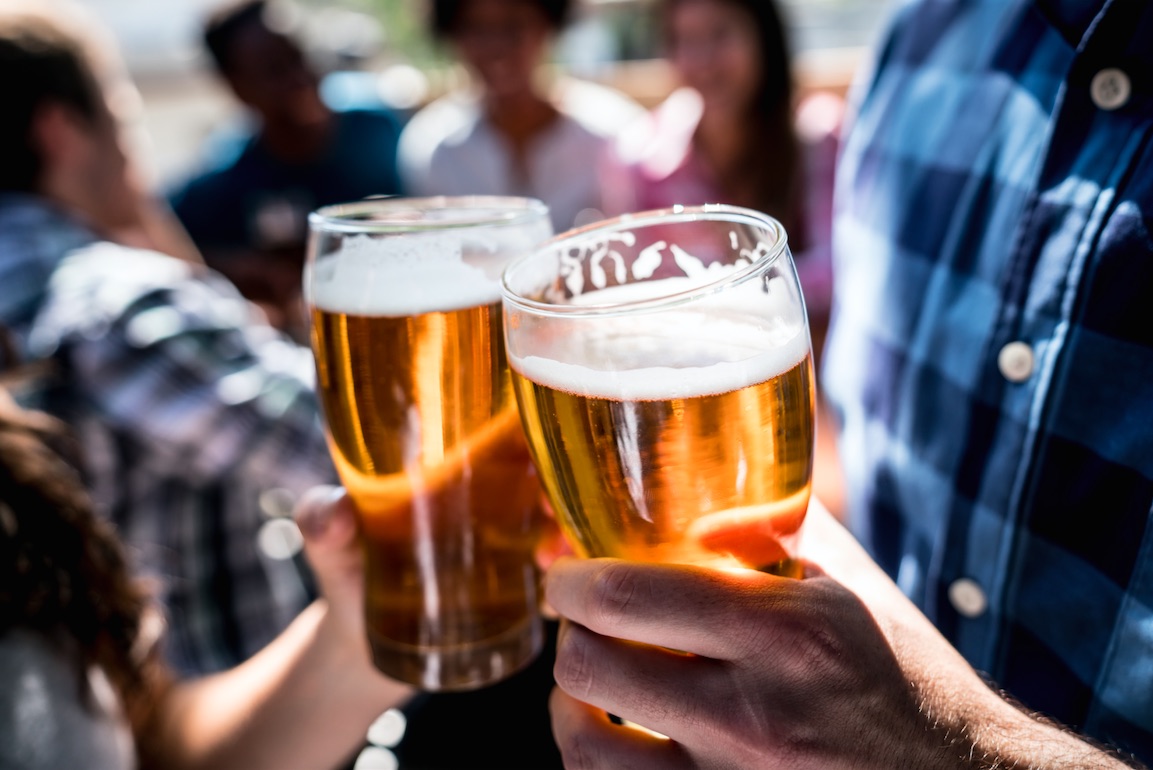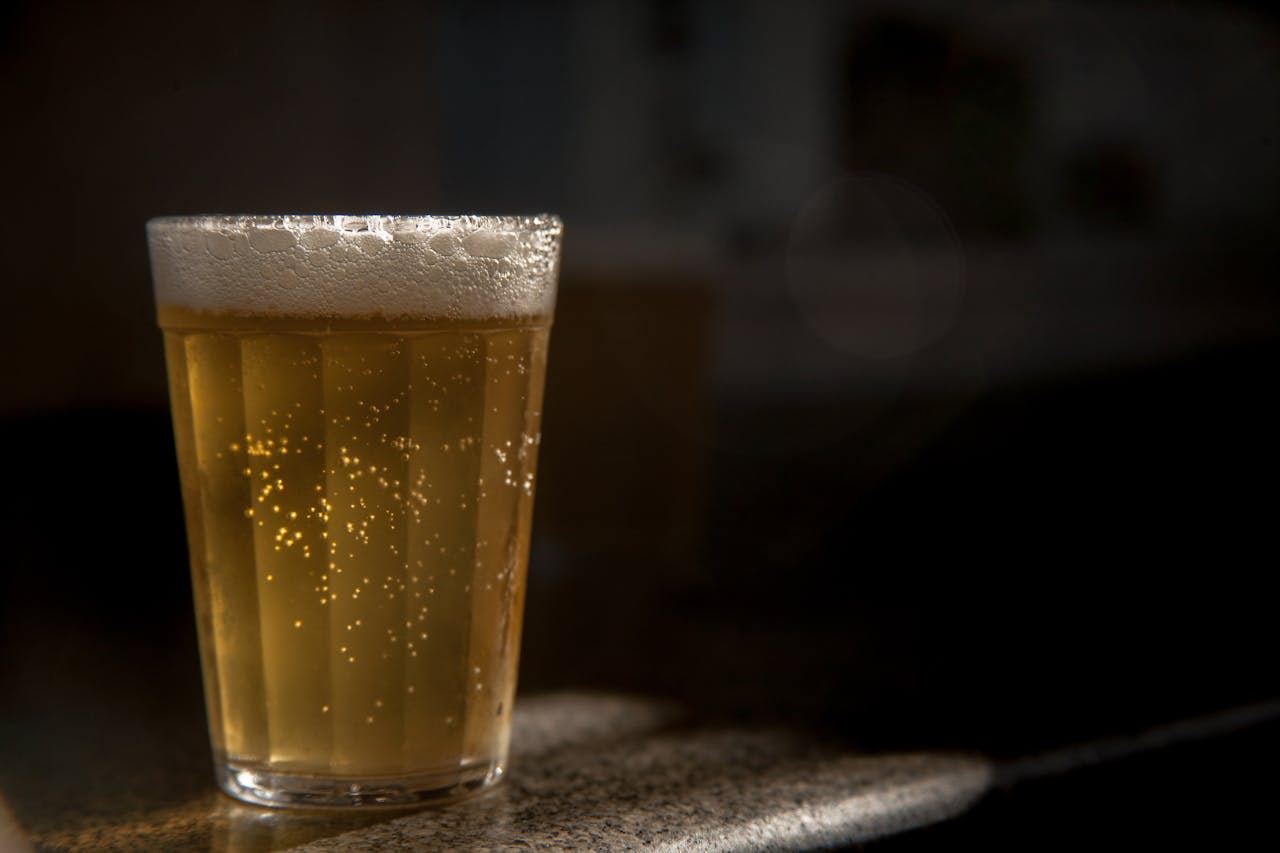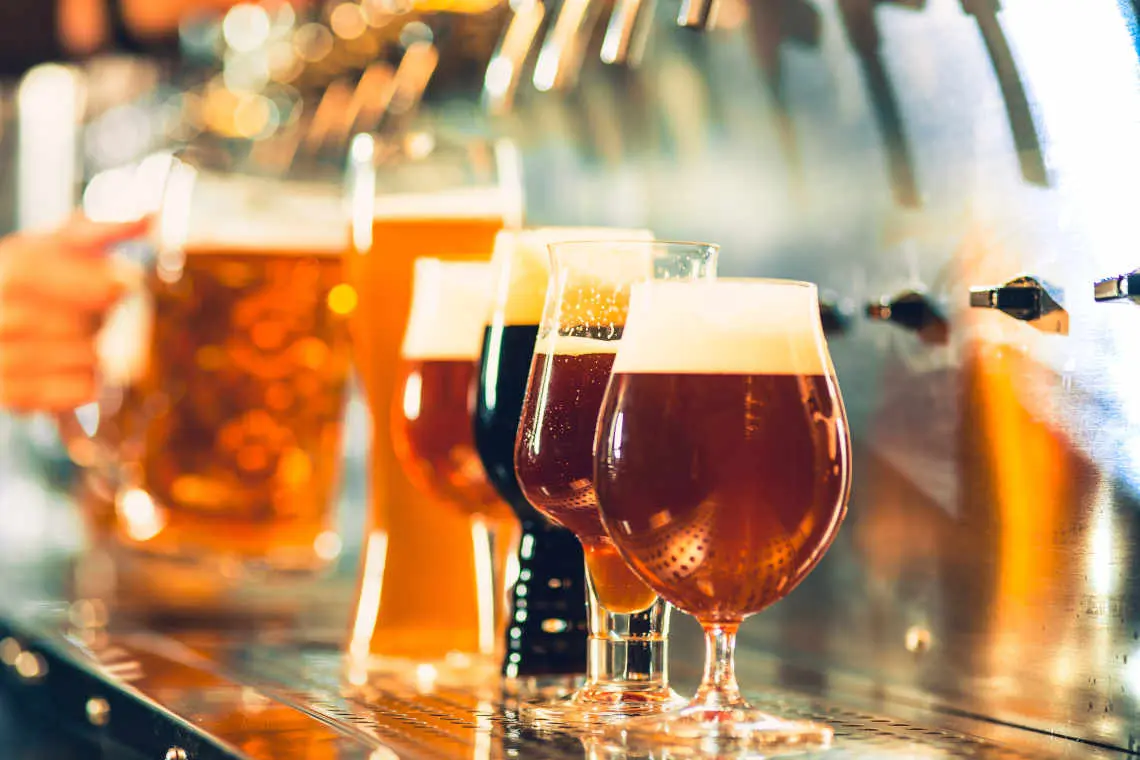Alcohol Taste Testing

Alcohol taste testing plays a crucial role in the beverage industry. It ensures consistency in flavor profiles, identifies defects or off-flavors, and guides the development of new products that meet consumer preferences.
How do brands ensure their alcoholic beverages stand out and consistently meet the high expectations of connoisseurs and casual drinkers? The craft and science of creating the perfect alcoholic drink is an art – and alcohol taste testing sets the stage for market success, ensuring that every sip offers a journey of discovery and delight for the consumer.
What Is Alcohol Taste Testing?
Alcohol taste testing is an in-depth analysis of the complex flavor profiles, aromas, and textures that define alcoholic beverages. It assesses drinks’ quality, character, and appeal, ranging from wines and spirits to beers and cocktails.
This taste testing evaluates the sensory characteristics of alcoholic beverages, including wine, beer, and spirits. It involves assessing appearance, aroma, taste, and mouthfeel to determine the quality and characteristics of the beverage.
During alcohol taste testing, trained professionals, known as “sensory panelists,” use their senses to identify and describe various beverage attributes, such as fruitiness, acidity, sweetness, and bitterness. These evaluations help producers understand the consumer perception of their products and make informed decisions regarding product development and quality control.
Why Do Businesses Need Alcohol Taste Testing?

Alcohol taste testing is essential for ensuring product quality and consistency. It allows producers to identify variations and make the necessary adjustments to ensure every product that reaches consumers maintains the brand’s quality standard. This consistency is critical to building and maintaining consumer trust and loyalty, as customers expect the same experience with every purchase.
Moreover, alcohol taste testing facilitates innovation and differentiation since producers can experiment with new flavors, blends, and brewing or distillation techniques to create innovative products that capture the market’s interest. This process of exploration and refinement is critical for brands looking to lead rather than follow market trends.
Additionally, alcohol taste testing provides valuable insights into consumer preferences, allowing brands to tailor their products to meet the evolving tastes of their target audience. However, it brings many other benefits for businesses, including:
- Consistency Across Batches: Alcohol taste testing enables brands to monitor variations closely and adjust their methodologies to ensure a consistent product experience for consumers.
- Market Differentiation: Through alcohol taste testing, brands can explore innovative flavor combinations, production techniques, and unique ingredient profiles that set their products apart.
- Alignment with Consumer Preferences: Alcohol taste testing provides insights into the tastes and preferences of the target market, enabling brands to tailor their products to meet these expectations.
- Enhanced Brand Narrative: The nuances and qualities uncovered through alcohol taste testing can enrich a brand’s narrative, allowing it to tell a more compelling story about its heritage, craftsmanship, and commitment to quality.
Who Uses Alcohol Taste Testing
The craftsmen behind producing spirits, beers, and other alcoholic beverages are primary users of alcohol taste testing. For these professionals, the process is crucial for ensuring the quality and consistency of their products. Distillers and brewers also use taste testing to refine their recipes, adjust fermentation and distillation processes, and ensure that each batch meets their stringent flavor, aroma, and mouthfeel standards.
Sommeliers and mixologists rely on alcohol taste testing to deepen their understanding of different beverages and how they can be combined or presented to enhance the drinking experience. These professionals use their refined palates to curate selections for restaurants, bars, and events, ensuring that each offering is high quality and suits the intended audience or theme.
In larger beverage companies, quality control analysts conduct alcohol taste testing as part of the production process to ensure that every product adheres to the brand’s quality standards. These analysts look for any deviations in taste, aroma, or appearance that could indicate issues with the production process, helping to prevent subpar products from reaching the market.
When to Conduct Alcohol Taste Testing

Identifying the optimal moments for conducting alcohol taste testing is crucial for maximizing its benefits across different stages of product development, marketing, and quality assurance. This strategic timing ensures that the insights gained from the testing process are both relevant and actionable – and here’s a breakdown of critical instances when alcohol taste testing is particularly vital:
- Before Product Launch: Conducting alcohol taste testing before launching a new product is essential. This preliminary evaluation allows brands to refine their product based on expert and consumer feedback, ensuring it meets market expectations and has a strong chance of success.
- During Product Development: Alcohol taste testing plays a critical role during the product development phase. It enables brands to experiment with different formulations, blends, and aging processes to assess their impact on the final product’s flavor profile and overall sensory experience.
- After Changes in Production or Ingredients: Whenever there are changes in the production process or the sourcing of ingredients, alcohol taste testing becomes necessary. These changes can significantly affect the taste and quality of the final product. Taste testing ensures that the product remains consistent with the brand’s standards and consumer expectations despite these alterations.
- In Response to Consumer Feedback: If a brand receives significant consumer feedback or notices shifts in consumer preferences, conducting targeted alcohol taste testing can be beneficial. This allows the brand to explore new flavors or adjustments to their products that better align with current tastes, ensuring their offerings remain relevant and appealing to their audience.
- To Explore and Adapt to Market Trends: Alcohol taste testing is vital when exploring new market trends and adapting to shifts in consumer preferences. As the beverage industry evolves, staying ahead of trends—such as the growing interest in low-alcohol or non-alcoholic options—requires brands to continually test and refine their products to meet changing consumer demands.
In any case, business managers must ask themselves these questions:
- Purpose: What is the goal of the taste testing? Is it to gather feedback on a new product, evaluate the quality of an existing product, or something else?
- Sample Selection: How will the samples be selected? Will they represent a range of flavors, styles, or brands?
- Tasting Environment: Where will the taste testing take place? Is the environment conducive to accurate tasting, free from distractions and strong odors?
- Taster Selection: Who will participate in the taste testing? Will they be trained professionals, consumers, or a mix of both?
- Evaluation Criteria: What criteria will be used to evaluate the samples? Will tasters be looking for specific flavors, aromas, or characteristics?
- Feedback Collection: How will feedback be collected and analyzed? Will it be done anonymously, and will it be recorded for future reference?
What are the Largest-Growing Segments in Alcohol Taste Testing?
- Craft Spirits: The popularity of craft spirits, including whiskey, gin, and rum, has been on the rise, leading to increased demand for taste testing services in this segment.
- Wine: The wine industry continues to grow, with consumers interested in exploring different varieties and regions. This drives the need for taste testing to evaluate quality and characteristics.
- Non-Alcoholic Alternatives: The market for non-alcoholic beverages, including alcohol-free spirits and wines, is growing, creating opportunities for taste testing to develop appealing flavors.
- Functional Beverages: Functional beverages, such as those containing CBD or other health-enhancing ingredients, are gaining popularity. They require taste testing to ensure consumer acceptance.
Expected Results from SIS International’s Alcohol Taste Testing

When engaging in alcohol taste testing with SIS International, businesses can expect a range of significant outcomes that enhance the sensory appeal of their beverages and strategically position them for success in the competitive alcohol market. Here are the key results that can be expected from a comprehensive alcohol taste testing process:
Elevated Product Quality:
One of the primary outcomes is the tangible improvement in the overall quality of the beverage. This encompasses taste, aroma, and mouthfeel refinement, ensuring that the product meets and exceeds industry and consumer expectations.
Alignment with Consumer Tastes:
The insights gained from taste testing allow for precise alignment with consumer preferences. This ensures that the product offerings fit current trends and consumer demands, enhancing market receptivity and consumer satisfaction.
Strategic Market Positioning:
The detailed analysis and feedback from alcohol taste testing inform strategic decisions regarding market positioning and product development. This allows brands to target specific consumer segments more effectively and capitalize on emerging market opportunities.
Informed Product Development:
The data-driven insights obtained from taste testing guide the product development process, ensuring that new products are well-received by the target market and have a higher chance of success upon launch.
Feedback Loop for Continuous Improvement:
Alcohol taste testing establishes a valuable feedback loop, enabling continuous improvement of existing products and guiding the development of future offerings. This iterative process ensures that brands can adapt to changing consumer preferences and remain competitive.
Advantages and Disadvantages of Alcohol Taste Testing
Advantages:
- Quality Assurance: Alcohol taste testing ensures that the product meets the expected standards of taste and quality.
- Consumer Satisfaction: Taste testing can increase consumer satisfaction and loyalty by ensuring the product meets consumer expectations.
- Product Improvement: Feedback from taste testing can be used to improve the product, leading to better market acceptance.
Disadvantages:
- Cost: Conducting taste tests can be expensive, especially if many samples are involved or if professional tasters are hired.
- Subjectivity: Taste is subjective, and individual tasters may have different preferences, leading to inconsistent results.
- Time-consuming: Taste testing requires time and resources to organize and conduct, which can be a drawback for businesses with tight schedules.
Step By Step Process of Alcohol Taste Testing

This step-by-step guide outlines the critical stages of a typical taste-testing session, providing insights into how experts assess and appreciate different alcoholic beverages.
- Selection of Samples: Taste a variety of alcoholic beverages, including different types of wine, beer, and spirits. Select samples that represent a range of flavors, styles, and brands.
- Preparation of Samples: Ensure the samples are served at the correct temperature and in appropriate glassware to enhance the tasting experience. This includes using clean, odor-free glasses and serving the samples at the recommended temperature.
- Visual Examination: Begin by visually inspecting each sample. Note the beverage’s color, clarity, and viscosity. These visual cues can provide insights into the product’s age and quality.
- Aroma Assessment: Swirl the glass to release the aromas, then sniff the beverage to identify the various scents. Note the intensity and complexity of the aromas and any specific notes such as fruit, floral, or spice.
- Taste Evaluation: Take a small sip of each sample and allow it to coat your palate. Note the flavors present, including any initial impressions and how the flavors evolve. Consider the balance of flavors and the intensity of each component.
- Mouthfeel Analysis: Consider the texture and body of the beverage as it sits in your mouth. Note the viscosity, carbonation level (for beer), and sensations such as smoothness, astringency, or warmth from alcohol.
- Overall Impression: Formulate an overall impression of each sample, considering its balance, complexity, and finish length. Evaluate how well the flavors harmonize and whether the beverage is enjoyable and memorable.
- Discussion and Comparison: Discuss your findings with others, including fellow tasters and experts, to gain different perspectives and insights. Compare notes on each sample to identify common themes and differences.
The SIS Approach to Alcohol Taste Testing
The SIS International approach to alcohol taste testing stands out for its rigorous methodology, depth of expertise, and strategic insights, all designed to provide alcohol brands with a clear pathway to excellence. This multifaceted approach ensures the beverages’ sensory superiority and alignment with market trends and consumer preferences.
Expert-Led Evaluations:
Expert-led evaluations are central to the SIS approach, where seasoned tasters with extensive experience in the alcohol industry conduct comprehensive assessments. These experts utilize a refined palate and deep knowledge of sensory analysis to discern and describe each beverage’s intricate flavors, aromas, and textures. This level of expertise guarantees a thorough and nuanced understanding of the product’s sensory profile.
Structured Sensory Analysis:
SIS employs a structured sensory analysis framework that encompasses a range of attributes specific to alcoholic beverages. This includes but is not limited to, appearance, aroma, body, taste, and finish. By adopting standardized evaluation protocols and utilizing sensory lexicons, SIS ensures that the analysis is detailed and consistent across different sessions and products.
Integration of Consumer Insights:
What sets the SIS approach apart is the integration of consumer insights into the alcohol taste testing process. Recognizing that a beverage’s ultimate success lies in its acceptance by the target market, we combine sensory evaluation with market research. This dual approach allows brands to understand how their products resonate with consumers and identify opportunities for alignment with consumer tastes and preferences.
Actionable Recommendations:
Following the taste testing sessions, SIS provides brands with actionable recommendations based on the collected data. These recommendations are tailored to address each brand’s specific needs and objectives. The goal is to empower brands with the insights to make informed decisions that enhance their product’s appeal and market performance.
Focus on Continuous Improvement:
The SIS approach is characterized by its focus on continuous improvement. The alcohol market is dynamic, with evolving consumer preferences and emerging trends. SIS encourages brands to conduct ongoing taste testing for product development and quality assurance. This commitment to continuous refinement ensures that brands adapt to market changes and maintain their competitive edge.
Opportunities
Alcohol taste testing opens up multiple opportunities for businesses in the alcohol industry, enabling them to refine their products, understand their market, and strategically position themselves for growth and success. Here are some of the critical opportunities that arise from engaging in alcohol taste testing:
- Product Innovation and Diversification: Alcohol taste testing encourages innovation by allowing businesses to experiment with new flavors, ingredients, and production techniques. This experimentation can lead to the development of unique products that meet emerging consumer trends, such as craft spirits, non-traditional blends, or low-alcohol beverages, diversifying the brand’s product portfolio and appealing to a broader audience.
- Market Adaptation: By incorporating consumer preferences and feedback into the taste testing process, businesses can adapt their products to meet the needs and desires of their target market. This adaptability is crucial in a rapidly changing industry and can help brands stay relevant and competitive.
- Brand Positioning and Storytelling: The insights gained from alcohol taste testing can enrich a brand’s narrative, highlighting the craftsmanship, heritage, and quality that go into each product. This storytelling is a powerful marketing tool that can differentiate a brand in a crowded market, attracting consumers who value authenticity and quality.
- Competitive Advantage: Alcohol taste testing gives businesses a competitive advantage by enabling them to offer products aligned with current market trends and consumer preferences. This strategic advantage can be key to gaining market share and establishing the brand as a leader in the industry.
How SIS International’s Alcohol Taste Testing Helps Businesses
SIS International‘s approach to alcohol taste testing distinguishes itself through a rigorous methodology, deep industry expertise, and a client-centric focus. This unique blend of attributes ensures that businesses receive comprehensive sensory evaluations of their products and strategic insights that can drive growth and innovation.
Comprehensive Sensory Analysis:
SIS International employs a detailed and structured sensory analysis process that covers all aspects of the beverage experience, from appearance and aroma to taste and aftertaste. This thorough evaluation ensures every characteristic is noticed, providing businesses a complete understanding of their product’s sensory profile.
Expertise and Experience:
The SIS International team of tasters brings together a wealth of experience and a broad range of expertise in the alcohol industry. This depth of knowledge allows for nuanced and sophisticated evaluations beyond basic taste preferences, offering insights into the subtleties that define premium-quality beverages.
Integration of Consumer Insights:
A distinguishing feature of SIS International’s approach is the integration of consumer insights into the taste testing process. By combining sensory analysis with market research, SIS International helps businesses understand how their products resonate with target audiences, enabling more informed decisions about product development and marketing strategies.
Tailored Recommendations:
SIS International provides tailored recommendations specific to each business’s needs and goals. These actionable insights can address everything from product formulation adjustments to branding and market positioning strategies, offering a roadmap for enhancing product appeal and competitive advantage.
Global Perspective:
With experience across various markets and a deep understanding of global consumer trends, SIS International offers a global perspective crucial for brands looking to compete internationally. This global outlook ensures that taste testing considers the diverse preferences and cultural nuances that can influence product success in different regions.
Our Facility Location in New York
11 E 22nd Street, Floor 2, New York, NY 10010 T: +1(212) 505-6805
About SIS International
SIS International offers Quantitative, Qualitative, and Strategy Research. We provide data, tools, strategies, reports, and insights for decision-making. We also conduct interviews, surveys, focus groups, and other Market Research methods and approaches. Contact us for your next Market Research project.


